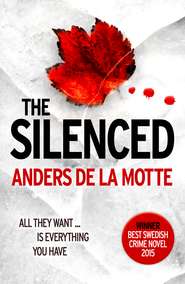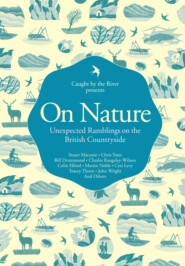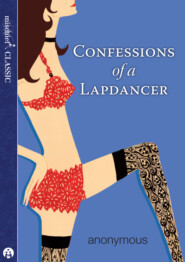По всем вопросам обращайтесь на: info@litportal.ru
(©) 2003-2025.
✖
We Are Not Such Things: A Murder in a South African Township and the Search for Truth and Reconciliation
Настройки чтения
Размер шрифта
Высота строк
Поля
In the end, she produced boy after boy, until she had borne six of them, from 1968 until 1982. She nearly died having her youngest child, to whom she gave birth alone while working as a maid; her boss returned home an hour later to find Kiki and the baby clinging to life in a pool of blood. Then there was an adopted son, the child of Wowo’s sister, who was raised as one of the brood, too, bringing the grand total in the Nofemela household to seven boys.
Other young cousins came to stay for weeks or even years, sent to Gugulethu from the rural parts of the country, or from other townships. They lay their blankets on the floor and helped with the washing and ate the dinners of samp, a cornmeal mush, boiled together with sugar beans and onions; meat on a good day; potatoes on a bad day; and pap, the pale cornmeal staple cooked into a porridge, for nearly every meal. Everyone drank their tea weak, made instant coffee with lukewarm water, and took three tablespoons of sugar, at least.
The seven brothers, and eventually their children, remained the center of Kiki and Wowo’s world. The main decor in the house was a framed, poster-sized collage of family photos, compiled with glue and cardboard by Wowo, a neat and precise retired gardener who also liked to sketch. In the middle, he had pasted a portrait of a young Wowo and Kiki, a sturdy and handsome pair in formal wear, staring out, unsmiling in the way of those unaccustomed to being the subject of a picture. Below, he pasted a large print of his own late parents and his wizened grandmother standing in a row on a tile floor, decades of hard labor and loss and crappy mattresses etched on their faces. Next to them, Wowo pasted a snapshot of Kiki’s late mother, glowing and vigorous, smiling next to a birthday sheet cake. Wowo inserted, wherever there was space, baby pictures of various grandchildren, often propped up on couches.
Then Wowo made a border around the photos, using large, rectangular grade-school portraits of each of his sons. They wore their V-neck sweaters and finest collared shirts and posed against blue backgrounds. Xola, the adopted cousin-brother, stands out against the rest, with his broad distinctive face and upturned nose. But the other six Nofemela boys, the genetic melding of Wowo and Kiki, are indistinguishable: dainty, light-skinned faces, little noses, almond eyes, full lips. The first time I saw the collage, I studied it, trying to pick out this boy from that. It proved impossible. It didn’t seem relevant to me then that I couldn’t distinguish one from the next, but it would become so later on.
Today, in their thirties and forties, the brothers all look different, adulthood having stretched and molded them into unique physical specimens. Easy is the shortest and most childlike, Martin the roundest, Vusumzi, the eldest and most imposing, Misiya the tallest, Gagi the most refined. And Mongezi—Monks, for short—is the most beautiful, with a smooth movie-star face, high cheekbones, and straight white teeth, punctuated with a single gold cap on the incisor. It is hard to tell his build or his height because he was paralyzed in 2009, thrown from a minivan taxi in the early morning hours, vertebra C4 injured.
These days, Monks often reclined in a stationary Ford sedan in front of the house. He had a compulsive fear of “fever,” though I later realized he was in fact terrified of contracting pneumonia, a common secondary ailment in paralyzed people, whose lungs are already compromised. He didn’t know why, but he sweat constantly, and he was concerned that the combination of damp sweat and a gust of cold air could cause him illness. Everyone was convinced that Monks could outwit pneumonia by staying very hot at all times, and so the rooms in which he convalesced were outfitted with heaters, and he was constantly shuttled between a sweltering bedroom, a sweltering TV room, and a sweltering automobile, parked in the noon sun. During much of the shuttling, everyone despaired of Monks, who was always making demands and barking orders. Wowo and all the brothers pulled out their backs monthly carrying Monks from bed to couch to car. Once, Easy had said to me, unaware of the reference to the song, “He is my brother, and he is so heavy.”
But back then, before they were marked by the ravages of time, those two Nofemela boys, Easy and Monks, looked just like each other. Months after our first conversations, for reasons I’ll probably never know, Easy gave me a photograph of the two of them that eventually helped me unravel a shred of the truth about what happened on that August day in 1993, the day of Amy’s death.
During Easy’s childhood, there were always too many people in a small space. There were two chocolates for ten kids, one shirt mended and handed down for twelve years, shared shoes and toothbrushes. The seven brothers were almost one organism, separated only by the corporal borders of flesh and bone. They slept together on a hay-filled sack, a pleasant experience of fraternal intimacy that had one big problem, according to Easy. Time and again, an unknown miscreant was “deep, deep dreaming that he is in the toilet.”
“Before we go to sleep, we talk, laughing, feeling great. But in the middle of the night, somebody is going to give you a dam of water.”
“So who was the culprit?” I asked.
“We wake up and we’re all suspects.”
Easy was not a star student, having started school at age seven. This, he claimed, was due to an inexplicable rule that I have never found in official literature, but that has been mentioned to me several times by black men who entered the education system in the 1970s and 1980s, as well as a Nigerian friend who attended school in Nigeria during the same time: in some instances, to start attending classes, black boys had to be able to reach their right arm over their head and clutch their entire left ear, with their necks stick-straight. This, for whatever reason, meant they were ready to go to kindergarten. Easy, small of stature and short of limb, couldn’t manage to grab his ear until he was nine, but, after watching kids in uniform march past his house for years, he stormed the school and announced to the principal that he wished to study.
“My only problem is my elbow,” he argued, and the principal relented. Once he was there, he was taken with mathematics, physics, and geometry.
“Everything about maths is tricking people,” he said.
In the mornings, Kiki made home-baked Sotho bread—sugary, dense, and steamy. The boys drank a mixture of fruit-flavored corn syrup and water, or, near the end of the month, simply water. Their favorite TV show was Knight Rider. Wowo coached a local soccer team, Harmony United, and taught his own kids to kick around a soccer ball as soon as they could walk. Easy played the game competitively and later somehow convinced journalists to refer to him as a “former soccer star.” In reality, he wasn’t half bad, but he was irritating to play with because no matter how crushing his team’s defeat, if Easy had scored a single goal, he’d celebrate for hours.
“I am a hero!” he’d exclaim, running around with his arms in the air, while the others glared at him.
In the Xhosa tradition, the family elders ruled the roost, and the Nofemela household was run by Melvin Nofemela. Melvin Nofemela was Wowo’s father and Easy’s grandfather. He was born in 1910 in a rural Eastern Cape village and died in 1997 in Gugulethu. He navigated a lifetime marked by massive historical changes, his suffering and his struggles engineered by a succession of distant white politicians and their loyal followers, and his liberation brought about three years before his death by a party of black freedom fighters who remain in power still, their glory days marred by persistent corruption and double-dealings.
In the century before Melvin’s birth, the land of his ancestors had become a battleground. Then, as in South Africa today, the fighting came down to the issue of land ownership. As white people encroached deeper into the nameless sweep of country, its borders yet drawn, wars erupted between the whites and the threatened African tribes with which they made contact. Melvin’s people, the Xhosas, fought the British and colonial forces in the border wars, but by 1860, the once prosperous farmers had been shattered, concentrated in small “native” areas, and stripped of their cattle.
Meanwhile, a new wave of Dutch pioneers, infuriated by British policies in the Cape Colony, loaded their belongings into wagons and headed north, armed with rifles. They pushed the Ndebele into today’s Zimbabwe. They fought the Zulus at a spot that came to be known as the Blood River, where three thousand Zulu soldiers, armed with spears, died at the hands of just over fifty pioneers, who obliterated their enemy with bullets and cannon fire. Within a generation, the Zulu kingdom, once a proud, repressive military dictatorship, had been definitively torn apart, first by civil war and next by an army of British soldiers. Meanwhile, the Sotho people, led by the famed Moshoeshoe, successfully battled Afrikaner commandos, and, years later, were allowed by the British powers to maintain a tiny mountain kingdom, an independent nation carved out of the greater South African mass and known today as Lesotho. Over time, the Pedi and the Shangaan, the Venda and the Tswana, the Tsonga and Swazi, were also dispossessed or run off their ancestral land by Dutch commandos, British army officers, or a combination of the two.
As the battles multiplied, Britain, which had once hoped only to protect a trade route, found itself pumping money into Southern Africa, trying to control numerous wars as well as a rebellious population of Dutch descendants. They had to deal with droughts and locusts and protect settler populations from angry indigenous populations. The colony had become a nuisance.
Between 1852 and 1856, Britain, in an attempt to quell restive Afrikaners, recognized two Afrikaner republics: the interior regions of the Transvaal and the Orange Free State. These land masses up to the northeast of the Cape were unenviable parcels of farmland in the middle of precisely nowhere. The Afrikaners were nonetheless pleased at this measure of autonomy, and commenced developing their republics. They were too few in number to build anything significant on their own, so Afrikaner commandos kidnapped black children. These children were often referred to as “black ivory,” in reference to their value as laborers, which was soon higher than that of white ivory. It was certainly more plentiful, as the elephant population had been decimated ever since men with guns landed on the peninsula.
Then, in the year 1866, in a dusty scrubland on the outskirts of a remote agricultural village in the Orange Free State, a young boy found a shiny pebble in the dirt on his father’s farm. It turned out to be a 21.25-carat diamond that was called, aptly, Eureka. Prospectors descended upon the area. In 1871, an 83.5-carat diamond was found on a hill on a property belonging to the farming De Beers family. One month later, a stampede of two thousand men had descended upon the land, and the hill was turned into an enormous depression, forty-two acres across, known as the Kimberley Mine, or, more colloquially, the Big Hole. Today, tourists gape at it.
Twenty years after the discovery of Eureka, as thousands of men marched into the Big Hole, a British carpenter wandered across a hill range in the Transvaal. He kicked a glistening stone and walked farther, scanning the land, until he happened upon a long reef of rocks, beneath which lay the biggest deposit of gold in the world. Soon, 300,000 miners would be working in this remote hinterland.
Word spread, and immigrants poured into South Africa, including thousands of persecuted Lithuanian Jews, from whom my husband is descended. European businessmen arrived with high hopes. Harbors sprang up along the coasts, as did a shipping industry. In the thirty-some years since Eureka’s unearthing, workers, mostly black laborers, had laid nearly four thousand miles of railway. Johannesburg, a city built around the gold trade, exploded, and within ten years of its founding it was larger than 250-year-old Cape Town. The earth was plundered and more minerals discovered: copper, iron, and coal. By the turn of the twentieth century, South Africa was no longer a backwater colony but a place in which a white man could make a fortune.
With the discovery of gold and diamonds, Britain regretted allowing the Afrikaners to set up shop on such precious land. In 1899, the British and the Afrikaner republics went to war. Initially shocked and humiliated by successful Afrikaner guerrilla tactics, imperial Britain resorted to all-out destruction: burning crops, razing homesteads, and interning the opposition in concentration camps, where 26,000 Afrikaners died, 80 percent of them children and the rest mostly women. In the end, the British lost 22,000 troops but prevailed.
The main result of this clash for the Afrikaners was a long-standing hatred for the British passed down through generations, and the birth of a particularly hard-line form of Afrikaner nationalism mixed with Dutch Reformed Christianity. This heady mix of religion and nationalism bloomed into a widespread belief that Afrikaners were God’s chosen people, under fire from blacks and British alike but destined to emerge as the ruling white tribe of Africa. They sought, then, to dominate the land in order to protect themselves and realize a divine plan. These deep-seated beliefs would one day morph into the formal system of governance known as apartheid.
After the Anglo-Boer War, the British and the Afrikaners negotiated a peace settlement. The British colonies merged into the Union of South Africa, which was self-governing under the dominion of the British government until 1961, when South Africa became a republic. The Afrikaner general Louis Botha won the 1910 elections, voted in almost entirely by the white British and Afrikaans minority. Though Botha encouraged Afrikaner pride, he was pragmatic: in a country with a black majority, the Afrikaner’s best bet was to create a white power base with his British countrymen, consolidating resources and authority in white hands.
The year of Botha’s victory was the year of Melvin Nofemela’s birth, on a distant homestead on an empty bluff in the far-off village of Lady Frere. Lady Frere was named after the wife of Britain’s high commissioner to the Cape Colony, a stately mustachioed Welshman named Sir Henry Bartle Frere. Frere, who had previously acted as governor of colonial Bombay, had plans to defend the Cape from a “general and simultaneous rising of Kaffirdom against white civilization,” as he said, and took to crushing Xhosa rebellions and starting a bloody war with the Zulus, despite their chief’s continued pleas for peace.
The exact day that Melvin came into the world was never recorded; birthdays are of little significance in old Xhosa culture. Melvin’s parents were illiterate subsistence farmers who had been tending to their land for generations, worshipping their ancestors, living in huts, and visiting sangomas, or traditional herbal healers, when they needed healthcare. The Nofemelas had little wealth and no formal education. The only schools in rural areas were isolated missionary programs, run by evangelical European families intent on saving African souls.
Melvin’s parents might have considered pursuing an education for their child, but when he was a year old, the Mines and Works Act was passed, prohibiting black South Africans from holding skilled jobs; menial labor would be their appropriate calling. By 1959, black students could only attend university with special state permission.
In that case, Melvin’s family may have hoped to leave the area and purchase land elsewhere, but when he was three years old, the Natives Land Act of 1913 passed. This act barred black South Africans from buying or leasing land in white areas; instead, they were relegated to “native areas” or “reserves,” undesirable and overpopulated plots. The land that blacks could legally own made up 7 percent of the total landmass of South Africa. In 1936, this was expanded to 13 percent. With the passage of the Land Act, blacks living on white-owned land were evicted. Many of them had been well-off peasant farmers, and now, if they did not make it to the reserves, they were forced to trudge from place to place, their families and downtrodden animals in tow, begging white men for a plot on which to pitch their disassembled homes in exchange for their labor.
Melvin could have headed to the cities to take a job, but by the time he was thirteen, the Native Urban Areas Act of 1923 cut short any such dreams and laid the foundations for the first townships, then called “native locations.” This act defined towns and cities as the white man’s turf. If blacks were ministering to white men as laborers or servants, they were permitted to live in segregated areas on the outskirts of the cities. But if a black man ceased to adequately serve the purposes and needs of whites, he could be deported back to the reserves.
Melvin, living on the bluff in Lady Frere, likely knew little of the political forces shifting his early life. But when he met and married teenage Alice, and she had their first baby in 1940 and their second in 1942, he knew he had to make money. Blacks had been surviving off the soil from time immemorial, but once their land had been reorganized and repopulated by the white government—too many people condensed on too little land, with watering holes and streams overrun—it became impossible for most residents to produce enough food on which to survive.
Melvin left his family in search of a job elsewhere, like many able-bodied black men at the time. In addition to supporting his family, he owed the government taxes, despite receiving neither rights nor representation. Along with hundreds of thousands, Melvin headed north and got a job in the expanding mines. His pay was a pittance, especially compared to a white man’s doing the same work: in 1951, the white gold miner earned nearly fifteen times the wage of the black gold miner, and by 1970, white miners earned twenty-one times the wage of black miners. Because of the Mines and Works Act, Melvin could never rise above the lowest rung of the job hierarchy. He was housed in a hostel, a single-sex compound that often pressed ninety men into a single dormitory. When he left to visit his parents, Alice, and his children for three weeks a year, he was strip-searched in case he was smuggling gold.
Though the idea of unionizing was gaining traction, it was still a daunting task. In 1913 at an open-pit diamond mine in the middle of the country, a black worker offended a white foreman, who proceeded to kick him to death. When his black colleagues went on strike, white workers and cops banded together to kill eleven black miners and injure thirty-seven others. Fighting for one’s rights was lethal business.
Melvin desperately missed his family, his hometown, his community. He returned annually to slowly build a small traditional house with a clay floor and straw roof. On one of his short holidays home, he took a second wife, as per Xhosa custom. His longing for his children and his hatred of the sweltering, perilous mines grew. Between 1933 and 1966, nearly twenty thousand men had died in the mines, which did not have adequate safety measures. The vast majority of victims were black. Frightened, both of death and of leaving his family destitute, Melvin searched for another job.
By that time, the Mines and Works Act had been expanded, so that white citizens would get first dibs at employment in other burgeoning industries: the railways, civil service, iron, and steel. Despite this, Melvin managed to get a job laying track for the expanding railways. First, he was based in Lady Frere, but soon the railways moved him to Cape Town. While the second wife remained in Lady Frere, Alice and the children followed, living with thousands of migrants on the outskirts of the city, pitching shacks just miles from stately white-owned 1950s-era homes with all the trappings of Western comfort and modernity. Melvin and Alice held strong against the odds. Often, defeated by distance, lacking telephones, and overwhelmed by loneliness, black men began affairs in the cities, which fractured many families and resulted in scattered children. Despite their commitment to each other, however, the Nofemelas found city living prohibitively expensive; they kept their elder children with them and sent the babies to be raised by relatives in the country.
The government, noting the unending creep of women from the reserves to the city, wished to remove “surplus females” (i.e., women who didn’t serve white businesses or other white interests) and growing families from the locations. But Melvin had other plans. He was saving money with the dream of bringing all of his children back together, one by one.
Nineteen forty-eight was Melvin’s thirty-eighth year. His son Wowo had just been born, and would in two years be sent to live with his uncle. Across the ocean, World War II had come to a close—of the 5,500 South Africans killed while supporting the Allies, a forgotten 25 percent were black. The world was reeling from the Holocaust, and the Nazis were on the losing side of history. But one party in South Africa was taking its inspiration from Hitler. This was the National Party, led by D. F. Malan, a Dutch Reformed cleric who campaigned on the platform of apartheid, Afrikaans for “separateness.”
The central theory behind apartheid was that South Africa was not a single nation, but in fact a collection of separate nations, each populated by a certain ethnic group. Conflict in South Africa stemmed from the unreasonable attempts of these nations to meld into one, and such conflict could be eliminated if only each group existed in separate but equal spheres, free from the demands and traditions of other pesky cultures. As with all systems of segregation, however, the truth was that the founders of apartheid intended to create a society that was indeed separate, but was breathtakingly unequal. Then they could keep all the good stuff for themselves.
Malan’s challenger was the incumbent Jan Smuts, a lesser racist, all things being relative. (Smuts, though opposed to giving blacks political power, helped draft the constitution of the United Nations’ forerunner, the League of Nations, and met with Gandhi on the rights of Indians in South Africa.) Only coloreds in the Cape and whites could vote in the election. On May 26, 1948, Melvin watched from the sidelines as Malan took power. One of the Malan government’s first orders of business was to eliminate the voting rights of coloreds.
In 1950, the National Party passed the Group Areas Act, a law that Prime Minister Malan dubbed with great reverence “the very essence of apartheid.” For centuries, various colonial and white governments had been redistributing black land into white hands, so that less than 10 percent of the population owned more than 85 percent of the land. But after their victorious 1948 election, the Afrikaner nationalists running the country started putting in place what they called groot apartheid, or grand apartheid.
The act aimed to forcibly separate each of the four official South African racial classifications into their own living areas. In Cape Town, whites, for the most part, inherited the beautiful city center, the leafiest suburbs, and the ocean views; Indians were bestowed with two small neighborhoods; and colored people were placed in square government matchbox houses in bleak zones that neighbored Gugulethu. Although the records are poor, some studies estimate that between 1960 and 1982, over 3.5 million South Africans were forcibly relocated, ripped from their property, and taken to townships or newly created “homelands.” The apartheid dream was to eventually create a white nation free of black inhabitants.
The homelands would help realize this dream. Each homeland was intended to act as a pseudo-autonomous “nation” for a particular ethnic group, where all its members would live in peace. The homelands, which eventually numbered ten, were actually rural backwaters, where white investment was illegal. They were geographically fractured, separated by white farms, and overcrowded, set on just 13 percent of South African territory. In one central eastern homeland named QwaQwa, designated for the Sotho people, 777 people were expected to survive on the fruits of a single square mile; Easy’s mother, Kiki, had been born there.
There was neither sufficient healthcare nor sanitation in the homelands, which resulted in outbreaks of cholera, tuberculosis, polio, and even the bubonic plague—in the mid- and late twentieth century. In 1974, the infant mortality rate of black children was 110 per 1,000, and the primary cause of their death was malnutrition.
“There was too much witch in the Transkei,” Easy once told me, referring to the portion of today’s Eastern Cape province that included his family’s hometown of Lady Frere. “The women have many miscarriages.”
Melvin, once a citizen of South Africa, was considered by lawmakers a member of the “Xhosa nation,” and was to become a citizen of Transkei, where he was expected to settle permanently. He might work in the “European” cities or towns—and might, in the course of this work, father children in these white areas—but his family would always be temporary laborers in the greater South Africa. As the Department of Bantu Administration and Development stated in 1967: “As soon as [black workers] become, for one reason or another, no longer fit for work, or superfluous in the labour market, they are expected to return to their country of origin or the territory of the national unit where they fit ethnically if they were not born and bred in their homeland.” The state, still intent on marketing the homelands as decolonized areas, installed cooperative black chiefs linked to the apartheid leadership. In 1977, Parliament granted Transkei independence. This independence was recognized by no country in the world other than South Africa.
Melvin, like many black South Africans, defied official attempts at confinement. By the late 1950s, Melvin and Alice had succeeded in bringing all of their twelve children back to Cape Town. They lived in a cramped, makeshift shack in an area called Elsie’s River, on the outskirts of the city. But then, as per the Group Areas Act, Elsie’s River was declared a colored area. Colored people, who had been forced from their homes—many lovely houses near the sea were handed over to whites—were relocated to crime-ridden apartment blocks or shoddy little houses on the Cape Flats. In 1960, Melvin and his family, including thirteen-year-old Wowo, were loaded onto an open truck and driven five miles south, where they were unceremoniously dumped, with their belongings, on a vast field on the border of the preexisting township of Nyanga.
For two weeks, as they built a new shack by hand, they sheltered under a table and washed and drank from a single tap installed a mile away. Nearby sat rows of houses constructed for “bachelor” men, whose purpose was to provide labor to white industry. Those dumped on the field took to calling their new neighborhood “Elsie’s,” since they had all been rounded up there. But soon groups of removals came from elsewhere, and the government dubbed the area Nyanga West.
In 1962, the government saw that Nyanga West was growing, teeming with new arrivals rounded up throughout Cape Town, as well as the regular migrants from the Eastern Cape. They renamed the area “Gugulethu Emergency Camp,” and it would soon become the city’s third official township. Gugulethu means “our pride.”











